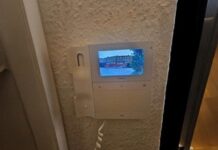
On a daily basis, schools attract thieves and unwanted intruders. One report from Teaching Times suggests almost half of UK schools experienced technology theft in the last three years, for example. Computer theft from schools is so prevalent, even the World Bank has addressed it in a report. Better security and access management, of course, is the solution.
Security is also an enabler for innovation. Without flexible security, developments in technical education like BYOD (Bring Your Own Device) cannot take off.
In an ideal world, top-of-the-range access control would be standard for all schools. But challenges persist. Doors in schools perform many different roles: some handle high traffic (the main entrance), while others see little daily use. Most school managers are non-technical; they may want to embrace new technology but do not know exactly where to turn. The wrong system could demand time-consuming administration. And, of course, budgeting looms over every decision.
Electronic access could be the answer. Without appropriate security, no school can ensure student safety. The UK’s national school inspection body, Ofsted, actively checks a school’s access system. It underlines the importance of reliable access control, including anti-intruder measures, protection against vandalism, and in disaster scenarios, automated evacuation or lock-down.
With so many doors at a typical site, mechanical key management is laborious. A large high-school keeps track of keys for the entrance, classrooms, laboratories, AV rooms, drama studios, IT and server rooms, offices, the library, gym, canteen and kitchen, medical rooms, student locker bays, staff rooms, and maintenance rooms. The key-tracking workload is enormous, and potentially it could be replaced with one, intuitive software interface.
Electronic access control is able to dispel the shortcomings of lock-and-key security. With key-cards instead of mechanical keys, it’s easy to cancel a lost credential immediately and efficiently. Providing access to a new site user, or removing permissions from a departed staff member, is straightforward. If an incident occurs, administrators collect an audit trail for any door or user via the software. Advanced features like real-time control become possible, with the right system.
Electronic access control enables security managers to programme fine-grained access permissions for every user. So, for example, the school director has blanket all-areas access from a single RFID card, while maintenance and security staff are excluded from management offices or sensitive data stores. Teachers and cleaners hold time-based permissions, so they only enter during their individual working hours. Such precision is near-impossible with mechanical security. For example, the Smartair wireless access control system is designed for schools. With intuitive management software, credentials and battery-powered locks in many configurations, it is easy to install and convenient for non-technical staff to use. The system can handle a large number of users and logs every interaction, so incidents are investigated efficiently.
The system is more cost-efficient to run than wired access control or traditional mechanical security. Doors require minimal alterations when Smartair battery-powered devices are fitted, because there is no wiring around the door. Accessible from a PC, tablet or mobile device, the software puts site managers in total control. They check door status at a glance and profiles can be created for different user groups — teachers, cleaners and office managers. Features can be tailored to every building or door, as required.0
In addition, Smartair devices fit many kinds of openings, so they can be used for lockers in communal areas or changing rooms and the same credential can make payments in the canteen.











